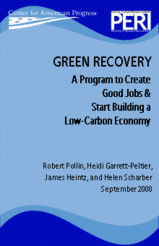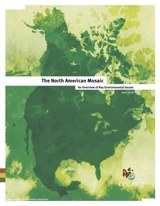News
Taking Care
Nov 04, 2018
 Driving to work the other morning, I realized we do a pretty good job of taking care of our roads. Perhaps a less good job of taking care of our other infrastructure, though at least we repair most bridges after they collapse under us and water mains after they burst their worn-out seams. And we do a really excellent job of taking care of our one percenters, albeit they pay a pretty penny to make sure we do.
Driving to work the other morning, I realized we do a pretty good job of taking care of our roads. Perhaps a less good job of taking care of our other infrastructure, though at least we repair most bridges after they collapse under us and water mains after they burst their worn-out seams. And we do a really excellent job of taking care of our one percenters, albeit they pay a pretty penny to make sure we do.
However, we are really crummy at taking care of ourselves.
We graduate functionally illiterate children by the millions each year.
https://www.npr.org/templates/story/story.php?storyId=121374125
https://www.creditdonkey.com/illiteracy-in-america.html
And how many of them do you think could recite one complete poem, tell you anything about the Somme, or begin to explain photosynthesis?
We don’t pay most of our workers enough to live on.
https://www.epi.org/resources/budget/
http://fortune.com/2015/04/13/who-makes-15-per-hour/
And nearly 40% of our work force neither work nor are looking for work.
https://www.bls.gov/opub/mlr/2016/article/labor-force-participation-what-has-happened-since-the-peak.htm
The failure of most of us to see even modest appreciable income gains over the past 30-40 years, while the wealth of the wealthy has ballooned to enormous proportions, is the stuff of more media reports than I need to document here.
Fifty-seven percent of Americans have less than $1,000 in savings, and 39% of them have none at all.
https://www.cnbc.com/2017/09/13/how-much-americans-at-have-in-their-savings-accounts.html
We are rapidly becoming a nation of very few haves and a huge majority of have-nots. This cannot in any way be construed as a good job taking care of ourselves. And that is what a democracy is supposed to be about.
We don’t need to reproduce the social welfare model of Scandinavian countries and much of the rest of Europe in order to turn around the deplorable conditions under which we condemn ourselves to live. We are a hearty people, in love with the notions of liberty, independence, and self-reliance.
We need the tools, however, to assure ourselves of the opportunity to live those lives of self-reliance. And those tools are to be found in two places: Education and employment. We need to turn our full attention to both of them and reform our ways, so that we can get on to addressing our primal existential danger--climate change--that threatens to bring us all hurtling toward extinction.
Tuesday is our next chance to begin that process. Will we?
400 ppm and Counting
May 26, 2013
 The only question now is whether the relentless rise in carbon can be matched by a relentless rise in the activism necessary to stop it. —Bill McKibben
The only question now is whether the relentless rise in carbon can be matched by a relentless rise in the activism necessary to stop it. —Bill McKibben
The CO2 level in our atmosphere has reached 400 parts per million (ppm), higher than at any time in the past 3 million years. The annual rate of increase has also accelerated over the past 55 years from about 1.55 ppm to more than 2.5 ppm.
NASA recently polled ten climate scientists on their reaction to this landmark number, and it is revealing how mild their reactions seem. No one is standing on a chair, screaming hysterically for change in our energy policies. This speaks to the success the radical right has had in pooh-poohing climate change. The scientists who know best the awful future we are facing are keenly sensitive to appearing to be alarmist, though we are now past the time when alarm bells should have reached deafening levels around the globe.
Obama will soon approve or disapprove the Keystone XL pipeline. The pipeline would bring tar sands oil from Alberta, Canada, to other pipelines already under construction in the U.S. that would deliver it to refineries in Texas. Though in and of itself the pipeline will not increase the CO2 levels spewing into the atmosphere—if this pipeline is not approved, Alberta will find a way to ship their product to the orient— it isn’t going to help, either.
We need an energy initiative at least as ambitious as our race to the moon in the 1960s, and much more vital to all our interests. Here is one idea: Let’s cut our use of fossil fuels by 4% every year for the next 25 years. Cut our imports and cut our domestic production and utilization. In a quarter of a century, we can get to the point where we contribute nothing to the growth of greenhouse gas emissions, at least insofar as they are caused by the burning of fossil fuels. Of course, along the way, we are going to have to maximize conservation, development of renewables, and research and development aimed at keeping the lights on and the traffic moving after 2038. Is there anyone, knowing of our wealth and our resources, who can seriously doubt we could succeed?
On the other hand, knowing what we know about the way the world runs in 2013, is there anyone who can seriously believe we will embark upon anything like this in the foreseeable future? More to be expected is that we will continue our inexorable march to the Land of No Return.
Guest Editorial: Shai Agassi
Apr 24, 2009
 We'll take the day off and let Shai Agassi talk to you about A bold plan for mass adoption of electric cars. This TED Talk will show you how whole countries will be driving emission-free electric vehicles by 2020. “Persuasive; Inspiring; Ingenious!”
We'll take the day off and let Shai Agassi talk to you about A bold plan for mass adoption of electric cars. This TED Talk will show you how whole countries will be driving emission-free electric vehicles by 2020. “Persuasive; Inspiring; Ingenious!”
Water Pressure
Apr 22, 2009
 After oxygen, the first requirement for the sustenance of life is fresh water. It is a finite resource for which there is no substitute, and water is coming under dangerously high levels of competitive pressure, driven by increasing population and international development efforts. Seventy percent of fresh water is used for agricultural irrigation—at the front of the food chain, in other words, and in a position, should supplies fall, of directly impacting our ability to feed a population expected to grow from six to nine billion between 2000 and 2050. We have seen steep price increases in food in recent years, driven by population and development pressures, as well as the biofuel initiative, which is alone responsible for as much as 70 percent of the increase in corn prices.
After oxygen, the first requirement for the sustenance of life is fresh water. It is a finite resource for which there is no substitute, and water is coming under dangerously high levels of competitive pressure, driven by increasing population and international development efforts. Seventy percent of fresh water is used for agricultural irrigation—at the front of the food chain, in other words, and in a position, should supplies fall, of directly impacting our ability to feed a population expected to grow from six to nine billion between 2000 and 2050. We have seen steep price increases in food in recent years, driven by population and development pressures, as well as the biofuel initiative, which is alone responsible for as much as 70 percent of the increase in corn prices.
Although we are on track to meet the Millennium Development Goal of clean drinking water for 90 percent of the world’s population by 2015, we are far behind on the goal to provide basic sanitation services, also heavily dependent on water. In this regard, 2.4 billion people—a third of the world’s population—are expected to be without access to basic sanitation in 2015. The economic and security ramifications of this are enormous.
Pressures such as these on a finite resource spell trouble. Get the full picture of where we are today and where we are going, in The 3rd United Nations World Water Development Report: Water in a Changing World. It is not a pretty picture, and if we don’t soon stop spending trillions to blow each other up and turn our attention and our resources to managing the basic water-related needs of the world, conflicts will arise in the next 50 years that will make the present hot spots around the world seem like friendly family squabbles.
For a look at the domestic scene, see Courting Disaster: How the Supreme Court Has Broken the Clean Water Act and Why Congress Must Fix It (.pdf, 2.1Mb, 44 pages), produced by a consortium of environmental groups.
All Aboard the Ostrich Express
Dec 17, 2008
 We can breathe easy. Global warming, the Intergovernmental Panel on Climate Change, and Al Gore are all washed up. This thanks to a minority report from the Senate Committee on Environment and Public Works. The ranking minority member of the committee is James M. Inhofe (R-OK), who has allegedly found 650 scientists around the world who are prepared to dispute the existence of global warming or any man-made crisis having to do with the release of greenhouse gases into the atmosphere. He takes the whole silly notion to task in a 231-page report (including a reprint of a previous report), clumsily though comprehensively entitled U.S. Senate Minority Report: More Than 650 International Scientists Dissent Over Man-Made Global Warming Claims. Scientists Continue to Debunk “Consensus” in 2008.
We can breathe easy. Global warming, the Intergovernmental Panel on Climate Change, and Al Gore are all washed up. This thanks to a minority report from the Senate Committee on Environment and Public Works. The ranking minority member of the committee is James M. Inhofe (R-OK), who has allegedly found 650 scientists around the world who are prepared to dispute the existence of global warming or any man-made crisis having to do with the release of greenhouse gases into the atmosphere. He takes the whole silly notion to task in a 231-page report (including a reprint of a previous report), clumsily though comprehensively entitled U.S. Senate Minority Report: More Than 650 International Scientists Dissent Over Man-Made Global Warming Claims. Scientists Continue to Debunk “Consensus” in 2008.
Inhofe, who has characterized the Red Cross as a “bleeding heart,” and out-conservatived the Bush Administration, the Pentagon, and the American Petroleum Institute in blocking ratification of the International Convention on the Law of the Sea,1 has put our tax dollars to work in an attempt to head off cap-and-trade legislation which the Obama administration hopes to initiate early on in 2009.
We’ll update this posting with the expected refutations of Inhofe’s report in future days and weeks. In the meanwhile, the pertinent point, and one which does not bode well for the coming administration and the 111th Congress, is the enormous powers which may be wielded by a single senator and, more importantly, by the minority party in the Senate. We have seen thirty years or more of polarized partisan politics in our federal government, which has effectively removed what is intended to be the people’s voice from influence over our economic well-being. We are only beginning to suffer the consequences.
We fear a continuation of the polarization, already seen in the Senate Republicans’ stonewalling of the auto industry bailout. Should Obama, the Great Conciliator, not find a way to move sufficient numbers of Republicans into his camp, we could easily see a continuation of the status quo, which has wiped out trillions in retirement savings, forced millions into foreclosure, swelled enormously the ranks of the unemployed, and brought us to the brink of a global depression.
____________________
1 Enemies of Science: Senator James M. Inhofe, from ScienceWeek, undated (accessed December 13, 2008)
Laying Waste to Conservatism
Nov 27, 2008
 If we need a historic record of the rapine of the Bush administration, we need go no further than Representative Raul M. Grijalva's (D-AZ) report emanating from his National Parks, Forests and Public Lands Subcommittee within the U.S. House Natural Resources Committee, entitled A Report on the Bush Administration Assaults on our National Parks, Forests and Public Lands (A Partial List) (.pdf).
If we need a historic record of the rapine of the Bush administration, we need go no further than Representative Raul M. Grijalva's (D-AZ) report emanating from his National Parks, Forests and Public Lands Subcommittee within the U.S. House Natural Resources Committee, entitled A Report on the Bush Administration Assaults on our National Parks, Forests and Public Lands (A Partial List) (.pdf).
It opens, “Over the last seven and a half years, the Bush Administration has pushed a concerted strategy of reducing the protections for our public lands, parks and forests, and opening up these lands for every type of private, commercial and extractive industry possible.”
Grijalva’s list includes the despoliation of our national parks through mining; lowering air quality standards; wild animal slaughter; intrusive use of recreational vehicles; and undermining the National Park Service work force through outsourcing, politicization, wrongful terminations, and staffing cuts. The neoconservative calls to “starve the beast” of government by cutting funding has led to woefully inadequate budgeting for land and water conservation and maintenance, and deteriorating historical artifacts. The oversight responsibilities of the Bureau of Land Management have been undermined by rules streamlining development; by the hiring of “consultants” employed by oil and gas companies; by rendering voluntary many corporate cleanup responsibilities; by stifling public input; by pandering to the off-road vehicle industry which is creating legal and environmental chaos on public lands; by public land giveaways. The list goes on and on.
2008 is the 150th anniversary of the birth of President Theodore Roosevelt, who was in office one hundred years ago, and who was the greatest conservation president in the history of our republic. In fact, he practically invented the conservation movement in the U.S.1 He was also a Republican.
True conservatives are concerned about conservation—the two words share etymological roots, after all. They do not manufacture every opportunity possible to rape the landscape for the short-term gain of their masters, at the expense of the people, future generations, and the precious land itself.
The shame attaching to the Bush administration for the unconscionable abrogation of its responsibilities is exceeded only by our own shame at having let them get away with it. One can only wonder which body—them or us—history will judge more harshly.
____________________
1 Theodore Roosevelt, Conservationist, from Wikipedia (Accessed November 22, 2008)
Breathing Room
Oct 28, 2008
 Can we agree we need to breathe, and that the air we need to do so comes from green things, the same things that, miraculously, absorb the greenhouse gas carbon dioxide that we exhale? And if we agree on this, how can we not agree to preserve our environment so that there are enough green things left in it to produce that loverly air?
Can we agree we need to breathe, and that the air we need to do so comes from green things, the same things that, miraculously, absorb the greenhouse gas carbon dioxide that we exhale? And if we agree on this, how can we not agree to preserve our environment so that there are enough green things left in it to produce that loverly air?
Not everyone does agree, however, and it is quite distressing to see how closely the states that don’t agree1 match up with the states that are expected to vote for John McCain.2
The needs of a struggling world are slowly—inevitably—making themselves felt, however, even if not quickly enough for the League of Conservation Voters (LCV), the nonpartisan group advocating for sound environmental policies. Their 2008 National Environmental Scorecard shows significant gains over 2007, with 67 House and 27 Senate members earning scores of 100 percent versus 33 and 3, respectively, in 2007. The House shows some backsliding on the other end in 2008, with 70 House and 2 Senate members earning scores of 0 percent, as against 48 House and 9 Senate members in 2007.
Obama did not vote in nine of the 11 crucial environmental issues in 2008. His pro-environment vote in two of them therefore earns him an 18 percent score for 2008, although LCV gives him a lifetime score of 72 percent. McCain did not vote either way on any of the 11 issues, making him one of the two senators with a 0 percent score (the other, David Vitter [R-LA], voted against all 11 environmental issues). McCain’s LCV lifetime score is 24 percent.
What in the name of heaven is the matter with these Republicans?
____________________
1 National Environmental Scorecard, from the League of Conservation Voters (Accessed October 21, 2008)
2 Election Day Map Today, from Polltrack.com (Accessed October 21, 2008)
Outta My Way, Smokey!
Sep 28, 2008
 Take a beautiful winter landscape, cold, quiet, white, and pristine, filled with protected wildlife and a wealth of natural phenomena such as geysers and hot springs. As the wonder and peace and magnificence of the place lifts your heart with joy, off stage left comes a sound rather like a large mosquito, louder, then louder, until what appears to be a sled comes crashing into your vision, tearing at 40 miles per hour over the virgin snow, passing in front of you, so loud you can’t hear yourself asking your companion what it is all about, then fades away in a smelly cloud of exhaust off stage right.
Take a beautiful winter landscape, cold, quiet, white, and pristine, filled with protected wildlife and a wealth of natural phenomena such as geysers and hot springs. As the wonder and peace and magnificence of the place lifts your heart with joy, off stage left comes a sound rather like a large mosquito, louder, then louder, until what appears to be a sled comes crashing into your vision, tearing at 40 miles per hour over the virgin snow, passing in front of you, so loud you can’t hear yourself asking your companion what it is all about, then fades away in a smelly cloud of exhaust off stage right.
Until recently, this was the Bush idea of a good time at Yellowstone National Park. Then, on September 15, the U.S. District Court for the District of Columbia ruled that the Bush Administration’s decision authorizing snowmobile use in Yellowstone violated the National Park Service’s responsibility to protect the clean air, wildlife, and natural quiet of national parks. A link to the decision may be found on the site of the Greater Yellowstone Coalition. The decision was written by Emmet G. Sullivan, who was appointed to various benches by Reagan, Bush I, and Clinton.
Though he has spent his life in Washington, D.C., he is a mighty friend of America. Thank you, Judge Sullivan!
Green Is Gold
Sep 26, 2008
 Remember that check you got from Uncle Sam last summer, the one that was going to jump-start the economy and get it back in shape? How’s that working out?
Remember that check you got from Uncle Sam last summer, the one that was going to jump-start the economy and get it back in shape? How’s that working out?
Okay, never mind. However, we could have taken that roughly $100 billion and put it into a plan devised by the Center for American Progress and the Political Economy Research Institute (PERI) at the University of Massachusetts/Amherst. For the same amount of money, raised through auctioning off carbon permits, we could invest in the following six energy strategies:
- Retrofitting buildings to improve energy efficiency
- Expanding mass transit and freight rail
- Constructing “smart” electrical grid transmission systems
- Wind power
- Solar power
- Next-generation biofuels
The road to recovery is paved with gold, if we can find ourselves a way around the dead end that is the fossil fuel-based economy.
Global Swarming
Sep 18, 2008
 If you wonder how a Sarah Palin can get away with expressing skepticism regarding humanity’s contribution to global warming, wonder no more. Environmental skepticism is big business, and it is entrenched in conservative “think” tanks (CTTs) across the country.
If you wonder how a Sarah Palin can get away with expressing skepticism regarding humanity’s contribution to global warming, wonder no more. Environmental skepticism is big business, and it is entrenched in conservative “think” tanks (CTTs) across the country.
The organisation of denial: Conservative think tanks and environmental skepticism, by Peter J. Jaques, Riley Dunlap, and Mark Freeman, published in the June 2008 issue of Environmental Politics,1 lays bare the extent of CTT collusion in attempting to gull the public into disbelieving the mounting scientific evidence. Indeed, as the evidence has mounted, the CTTs have become ever more strident in their attempts to howl it down.
The authors find that over 92 percent of English-language environmentally skeptical books published between 1992 and 2005 are linked to CTTs, and that 90 percent of CTTs involved with environmental issues espouse environmental skepticism. Five such books were published in the US in the 1970s, 13 in the 1980s, 56 in the 1990s, and we are on schedule to see over 70 published in the 2000s.
Some of the better-known CTTs are the Hoover Institution, the Cato Institute, and the Hudson Institute. We particularly enjoy the ones that choose for themselves names which would seem to indicate they are patriotic defenders of truth, and not shameless whores: American Council on Science and Health, National Center for Public Policy Research, and—our favorite—Heartland Institute (what craven curmudgeon would dare to diss the Heartland?).
And what is the antidote to all this very well-funded nonsense? Simple: The Nobel Prize-winning Intergovernmental Panel on Climate Change and the scrupulous science they have brought to their series of reports over the past 20 years. In one of the most recent,2 they conclude:
- “Warming of the climate system is unequivocal, as is now evident from observations of increases in global average air and ocean temperatures, widespread melting of snow and ice, and rising global average sea level.”3
- “Global GHG [greenhouse gas] emissions due to human activities have grown since pre-industrial times, with an increase of 70% between 1970 and 2004.”4
____________________
1 Environmental Politics, published by Routledge
2 Climate Change 2007: Synthesis Report. Summary for Policymakers (.pdf)
3 Op. cit., p. 2
4 Op. cit., p. 5
Exit Strategy
Aug 27, 2008
 In the waning months of the Bush 2 debacle, watch for any number of very quiet efforts on the part of the departing (we hope!) neocons and robber barons to strip the government of its protective prerogatives. We will highlight them here as they come to our attention.
In the waning months of the Bush 2 debacle, watch for any number of very quiet efforts on the part of the departing (we hope!) neocons and robber barons to strip the government of its protective prerogatives. We will highlight them here as they come to our attention.
The National Wildlife Federation (NWF) has blown the whistle on a recent effort to gut protections for America’s imperiled wildlife. Says NWF’s Executive Director John Kostyack, “I have been working on the Endangered Species Act for 15 years and have never seen such a sneaky attack ... Do not be fooled when the Administration claims it is merely tweaking the law. The cumulative impact of these changes equals a full blown attack on America’s premier conservation law.”
Among the changes proposed:
- Eliminate informal consultations with the Fish and Wildlife Service, which are required if a proposed act by an agency will have any effect whatsoever on an endangered species. By allowing the agency to make that determination unilaterally, the amendment effectively puts the fox in charge of the hen house.
- Reduce the number of formal consultations by granting the same unilateral determination to agencies.
- Impose an unreasonably short deadline on the consultation period.
We Who Hesitate
Aug 16, 2008
 Forget what it’s going to cost us to put the brakes on global warming. Let’s look at what it’s going to cost us not to. Since October 2007, the Center for Integrative Environmental Research (CIER) at the University of Maryland has been publishing national, regional, and, now, state-level studies that assess “The U.S. Economic Impacts of Climate Change and the Costs of Inaction.” The bottom line: Climate change will affect the entire country, although unevenly among various regions; its negative aspects will outweigh the positive ones; and it’s going to cost us, through increased public budgets, higher prices, reduced income, and job losses.
Forget what it’s going to cost us to put the brakes on global warming. Let’s look at what it’s going to cost us not to. Since October 2007, the Center for Integrative Environmental Research (CIER) at the University of Maryland has been publishing national, regional, and, now, state-level studies that assess “The U.S. Economic Impacts of Climate Change and the Costs of Inaction.” The bottom line: Climate change will affect the entire country, although unevenly among various regions; its negative aspects will outweigh the positive ones; and it’s going to cost us, through increased public budgets, higher prices, reduced income, and job losses.
The past is prologue, and the reports base many of their estimates of coming hardships on the patterns that have already begun to develop, patterns involving demonstrably and alarmingly higher temperatures, increased wildfires, droughts, flooding, and other extreme weather conditions. CIER makes two overarching recommendations: Set a national policy to immediately decrease greenhouse gas emissions coupled with a plan to adapt to unavoidable impacts; and set up regional and sector-specific studies to guide climate policy and investments, then make those investments by setting free “the intellectual power of the nation’s universities and [research] labs.”
Then hope it’s not too late.
Climate Extraordinarily Rendered to Pluto
Jul 29, 2008
 In a move sure to have international consequences, the U.S. Central Intelligence Agency (CIA)
today apprehended, detained, and extraordinarily rendered the Earth’s climate to an undisclosed location on the former planet Pluto, 93 million miles from CIA headquarters in Langley, Virginia.
In a move sure to have international consequences, the U.S. Central Intelligence Agency (CIA)
today apprehended, detained, and extraordinarily rendered the Earth’s climate to an undisclosed location on the former planet Pluto, 93 million miles from CIA headquarters in Langley, Virginia.
The move followed the nonrelease of a classified report by the National Intelligence Council (NIC). ATN did not obtain notice of the report, without a summary of its findings, from The Earth Institute (EI) at Columbia University (CU), which didn’t report on data unavailable from a contributor to the NIC report, the Center for International Earth Science Information Network (CIESIN), another arm not affiliated with Columbia University (CU). Whew!
The study does not explore how climate change “could threaten U.S. security in the next 20 years by not causing political instability, mass movements of refugees, terrorism, or conflict over water and other resources.”
Following no announcement of the extraordinary rendition, a spokesperson for the CIA did not add, “This climate is not going to change. The American people may be sure we’ll see to that!”
All of this is true, by the way, so don’t bother going to Snopes.com to find out if it’s an Urban Legend. Would I lie to you?
Park Central
Jul 21, 2008
 The 340,000-member National Parks Conservation Association finds itself approaching with high anxiety the centennial of American national parks (Yellowstone was the first in 1916). Their report, “The State of Our National Parks: A Resources Index,” summarizes the results of the first 54 resource assessments of individual national parks. This first-ever scientific assessment of the condition of our national parks rates the system’s natural resources (wildlife, ecosystem health, air and water quality) at 70 points (out of 100) and its cultural resources (historic buildings, cultural landscapes, and museums) at only 61. Both scores are in the low “Fair” range, with the cultural resource score bordering on “Poor.”
The 340,000-member National Parks Conservation Association finds itself approaching with high anxiety the centennial of American national parks (Yellowstone was the first in 1916). Their report, “The State of Our National Parks: A Resources Index,” summarizes the results of the first 54 resource assessments of individual national parks. This first-ever scientific assessment of the condition of our national parks rates the system’s natural resources (wildlife, ecosystem health, air and water quality) at 70 points (out of 100) and its cultural resources (historic buildings, cultural landscapes, and museums) at only 61. Both scores are in the low “Fair” range, with the cultural resource score bordering on “Poor.”
As with so many federal programs in the current administration, the parks system is being starved for funding, which manifests itself in many ways, especially in the inability to hire sufficient professional staff to care for the natural and cultural resources. Other stressors include outside forces such as air pollution, global warming, and overpopulation.
Our national parks represent our attitude towards ourselves as a people, and that attitude is deteriorating. We need to find our way back to ourselves as a great nation with enormous responsibilities to the world, and with the means and the humanity to meet them. Instead, we IM and twitter all day and strut our stuff on MySpace and Facebook to an audience of one, and we’re more isolated and alone and lonely than we’ve ever been, tiny pods of consumerism that have lost the joy and the energy of community.
As our parks go, so goes our nation.
Twice Around the Block
Jul 20, 2008
 Now here’s a great Web 2.0 site. You input a recyclable you don’t know what to do with—old paint cans, batteries, cell phones— and enter your zip code or city and state, and the site directs you to locations where you can recycle it. You can specify a range of 5 to 100 miles from where you are. The program displays address, phone, hours of operation, web site, and a map and directions to the recycling location(s).
Now here’s a great Web 2.0 site. You input a recyclable you don’t know what to do with—old paint cans, batteries, cell phones— and enter your zip code or city and state, and the site directs you to locations where you can recycle it. You can specify a range of 5 to 100 miles from where you are. The program displays address, phone, hours of operation, web site, and a map and directions to the recycling location(s).
If your library or other favorite local nonprofit collects cell phones or other recyclables as a fund raiser, tell them about this site. It’s easy to add their location. Click the “Contact Us” link at the bottom of the Home Page, then the “Submit/Update a Recycling Location” link.
The site also has a raft of tips and information regarding recyclables. Good job, Earth911!
King Coal
Jul 15, 2008
 In 2007, the U.S. produced 1,145,600,000 tons of coal. That's over 2 trillion pounds of the stuff, and we've been digging more or less that amount out of the earth for years. We burn most of it, primarily to produce electricity, sock some of it away against a rainy day, and export a bit.
In 2007, the U.S. produced 1,145,600,000 tons of coal. That's over 2 trillion pounds of the stuff, and we've been digging more or less that amount out of the earth for years. We burn most of it, primarily to produce electricity, sock some of it away against a rainy day, and export a bit.
Appalachia still produces a hefty portion of our coal (377 million tons in 2007), but a lot more of it comes from the Western states (621 million tons), with the rest coming from in between.
In 2007, we relied on coal-burning plants to generate 50% of our electricity; nuclear power and natural gas generated about 20% each, and the rest was generated by hydro (6%) and "petroleum and other," (3.6%) where I guess they tuck away solar and wind. It is sobering to realize how little of what we depend on so heavily comes today from renewable sources such as hydro, wind, and solar.
Meanwhile, scores of new coal-fired electricity generating plants—perhaps the worst contributors to global warming—are in various stages of production, including over 100 in proximity to our national parks, as reported in this July 8 ATN News Item.
These numbers come from the Energy Information Administration (EIA), an arm of the Department of Energy. You can read the 2007 report, and access earlier ones, at the link below.
The Matter of the Meat
Jul 09, 2008
 Animal agriculture—the raising of animals for human consumption—has experienced “warp speed” growth over the last 50 years. From a former paradigm of small family farms with a few animals housed in traditional barns and stables, we've morphed to a system of “industrial farm animal production (IFAP)” where thousands of animals are warehoused in factorylike structures, force fed, heavily medicated, and rushed to market after a life that can only be characterized, in the words of Thomas Hobbes, as “poor, nasty, brutish, and short.”
Animal agriculture—the raising of animals for human consumption—has experienced “warp speed” growth over the last 50 years. From a former paradigm of small family farms with a few animals housed in traditional barns and stables, we've morphed to a system of “industrial farm animal production (IFAP)” where thousands of animals are warehoused in factorylike structures, force fed, heavily medicated, and rushed to market after a life that can only be characterized, in the words of Thomas Hobbes, as “poor, nasty, brutish, and short.”
As Daniel Quinn has persuasively argued in Ishmael and other books, our problems began 10,000 years ago when we stopped hunting and gathering and settled down to planting. That ingenious move on the part of the species enabled rapid population growth, and subsequent improvements in agriculture encouraged additional population growth which brought additional improvements which brought additional growth, until we're so overpopulated we're running out of space to plant all those improved agricultural products. Enter the industrial farm animal production, and the unintended and dire consequences set forth in the report from the Pew Charitable Trusts Commission on Farm Animal Production, “Putting Meat on the Table: Industrial Farm Animal Production in America.”
As usual, we are only getting around to counting the costs of “progress” after we've begun paying them. The lengthy (124 pp.) and comprehensive Pew report covers just what those costs consist of, in terms of threats to our health; the impact on our poor, bedraggled environment; and the horrific consequences visited upon our fellow creatures in the cause of maximizing profits at both ends of the supply and demand chain. It summarizes a vast literature of research and the news it delivers is not good news. However, its recommendations to fix the system are as reasonable as they are thorough.
What I can do. What you can do.
First of all, we must elect representatives who will implement, through the passage of new laws, the recommendations set forth in the report. In the meanwhile, however, we can vote with our feet (and our mouths) by refraining from purchasing and eating animals and animal products which have not been produced in a humane manner. I believe only reputable third-party certification organizations may be trusted to provide standards that assure the humane treatment of farm animals. Thankfully, there are a number of them identified in the Pew report. (If you know of others, please tell me about them and I will add them to this list.) In future, I intend to require my retail providers (groceries and restaurants) to subscribe to one or more of these standards-defining and labeling bodies and will refrain from purchasing and consuming their products until they do so.
- Certified Humane Raised and Handled
- An International Standards Organization (ISO) certified third-party labeling program which provides detailed standards for egg-laying hens, broilers, turkeys, beef, dairy, sheep, and swine.
- American Humane Certified farm animal program (formerly Free Farmed)
- A third-party domestic labeling program that traces its roots to the formation in 1877 of the American Humane Association. It provides standards for egg-laying hens, broilers, turkeys, beef, dairy, sheep, and swine.
- United Egg Producers' UEP Certified Program
- A third-party auditing and labeling program for caged layers.
Park in the Dark
Jul 08, 2008
 The Environmental Protection Agency is at it again, attacking our environment, proposing regulatory changes that will make it easier to build new coal-fired power plants near national parks. Over 100 of these mega-greenhouse-gas-polluters are in various stages of development now, and the National Parks Conservation Association wants you to know about it. Their new report, “Dark Horizons,” identifies the 10 national parks most at risk from these new plants.
The Environmental Protection Agency is at it again, attacking our environment, proposing regulatory changes that will make it easier to build new coal-fired power plants near national parks. Over 100 of these mega-greenhouse-gas-polluters are in various stages of development now, and the National Parks Conservation Association wants you to know about it. Their new report, “Dark Horizons,” identifies the 10 national parks most at risk from these new plants.
An interactive map included on their web site shows in graphic and scary detail what will soon become obvious over all our heads. It's not enough that one in three national parks already has air pollution levels that exceed health standards. When 100 new plants come online, including eight just upwind of Mount Rushmore, we'll be lucky if we can tell one president from another in ten years.
Meanwhile, in May the federal government froze new solar development on public lands for two years. They give all sorts of reasons, and there are even some environmental groups that sympathize with those reasons to an extent. However, between the freeze and the upcoming end-of-year expiration of the federal solar investment tax credits, the fledgling industry, which was just starting to make real progress and attract major investment, is taking a one-two punch on the chin.
And here comes King Coal.
Weather Report
Jul 03, 2008

The Commission for Environmental Cooperation (CEC) is an international organization created by Canada, Mexico and the United States under the North American Agreement on Environmental Cooperation (NAAEC). The CEC was established to address regional environmental concerns, help prevent potential trade and environmental conflicts, and to promote the effective enforcement of environmental law. The Agreement complements the environmental provisions of the North American Free Trade Agreement (NAFTA).What? There are environmental provisions in NAFTA? All right, strike the cynicism.
CEC has produced a useful and timely (and beautiful) overview of 14 key concerns regarding the North American environment:
- Climate Change
- Ground-Level Ozone
- Particulate Matter
- Stratospheric Ozone
- Land Use
- Oceans and Coasts
- Invasive Species
- Species of Common Conservation Concern
- Acid Deposition
- Industrial Pollution and Waste
- Persistent Bioaccumulative Toxic Substances
- Water Quality
- Water Quantity and Use
- Shared Water Resources
Mind Your Own Business
Jun 25, 2008
 Global warming is here. And it's going to affect every aspect of our lives, indeed, it has already begun to do so. Droughts and cataclysmic weather disasters are becoming common occurrences in the news: the 2005 hurricane in New Orleans, the 2004 tsunami in Asia, the 2003 heat wave in France that killed almost 15,000 people.
Global warming is here. And it's going to affect every aspect of our lives, indeed, it has already begun to do so. Droughts and cataclysmic weather disasters are becoming common occurrences in the news: the 2005 hurricane in New Orleans, the 2004 tsunami in Asia, the 2003 heat wave in France that killed almost 15,000 people.
Businesses, if they are able to acknowledge the potential for disruption created by climate change, face both risks and opportunities. The Pew Center on Global Climate Change has provided a wake-up call to businesses in its 40-page report, "Adapting to Climate Change: A Business Approach":
This paper outlines a sensible business approach to analyzing and adapting to the physical risks of climate change. It focuses on a critical first step in assessing these climate impacts: understanding the potential risks to business and the importance of taking action to mitigate those risks.If you own your own business, read this report. If you don't, pass it along to the boss. Every business, as every individual, should begin to anticipate the challenges we face—from cataclysmic weather occurrences as well as from gradual and long-term changes in average temperature, water availability, the rising sea level, and fuel and power shortfalls (whether from natural resource exhaustion or increased regulation).
Today, we are on the fringes of real, disruptive hardship, and we aren't doing nearly enough to stop the inexorable march into disaster. Tomorrow, hundreds of millions face displacement, starvation, death by natural disaster, and internal and external violence. Please don't think for a minute that you or I aren't one of them.
Take a Deep Breath
Jun 21, 2008
 I am never sure what official pronouncements from the executive branch of our federal government are worth in the best of times. In the worst of times, when that branch has sought to close the Environmental Protection Agency libraries serving EPA researchers and the general public1 and have brought political pressure to bear on scientists, forcing them to subvert their science and misrepresent their findings2, we must be even more skeptical.
I am never sure what official pronouncements from the executive branch of our federal government are worth in the best of times. In the worst of times, when that branch has sought to close the Environmental Protection Agency libraries serving EPA researchers and the general public1 and have brought political pressure to bear on scientists, forcing them to subvert their science and misrepresent their findings2, we must be even more skeptical.
Still, for the record, here’s the EPA’s “2008 Report on the Environment (Final Report).” Its main sections are Air, Water, Land, Human Health, and Ecological Condition. The report “compiles, in one place, the most reliable indicators currently available to answer 23 questions the EPA believes are of critical importance to its mission and the nation’s environment.”
The data regarding greenhouse gases only goes through 2005, making one wonder whether the EPA decided to stop collecting it then, what with the news being so bad and all. Neverthless, it reports that total emissions of CO2 increased by 20% from 1990 to 2005, and that total greenhouse gas emissions in the U.S. in 2005 exceeded 7 billion metric tons (a metric ton is roughly equivalent to 2,200 pounds).
_______________
1EPA closure of libraries faulted for curbing access to key data [Source: Washington Post]
2EPA scientists cite political interference [Source: CNN]
Hats Off to Cap-and-Trade
Jun 20, 2008
 As everyone knows, the U.S. has never ratified the Kyoto Protocol treaty. Nevertheless, most of the rest of the world takes a less blasé attitude toward the impending doom threatened by global warming. The European Union (EU), in particular, has led the way in taking responsibility for initiating steps to lower its greenhouse gas emissions.
As everyone knows, the U.S. has never ratified the Kyoto Protocol treaty. Nevertheless, most of the rest of the world takes a less blasé attitude toward the impending doom threatened by global warming. The European Union (EU), in particular, has led the way in taking responsibility for initiating steps to lower its greenhouse gas emissions.
The EU has just completed a three-year “trial” period for an Emissions Trading System (ETS), popularly known as a cap-and-trade system. A report released by The Pew Center on Global Climate Change entitled, “The European Union's Emissions Trading System in Perspective,” written by A. Danny Ellerman and Paul Joskow of MIT, contains the following good news:
Although there have been plenty of rough edges, a transparent and widely accepted price for tradable CO2 emission allowances emerged by January 1, 2005, a functioning market for allowances has developed quickly and effortlessly without any prodding by the Commission or member state governments, the cap-and-trade infrastructure of market institutions, registries, monitoring, reporting and verification is in place, and a significant segment of European industry is incorporating the price of CO2 emissions into their daily production decisions ... The initial challenge is simply to establish a system that will demonstrate the societal decision that GHG emissions shall have a price and to provide the signal of what constitutes appropriate short-term and long-term measures to limit GHG emissions. In this, the EU has done more with the ETS, despite all its faults, than any other nation or set of nations.The report provides a good understanding of the complexities of a cap-and-trade system, as well as offering a blueprint for the U.S. and other johnny-come-latelies who are going to have to move with some dispatch once they realize the extent of the challenges we are facing.
In the Drink
Jun 03, 2008
 In 2004, federal, state, local, tribal, and private interests put their heads together over the potential devastation facing the Great Lakes and, working together despite often conflicting goals, their Great Lakes Coalition devised "a comprehensive strategy for restoring the Great Lakes and ensuring their long-term viability."
In 2004, federal, state, local, tribal, and private interests put their heads together over the potential devastation facing the Great Lakes and, working together despite often conflicting goals, their Great Lakes Coalition devised "a comprehensive strategy for restoring the Great Lakes and ensuring their long-term viability."
Their plan is laid out in a report released in May, entitled "Great Lakes Restoration & The Threat of Global Warming." Fifteen hundred individuals and eight strategy teams developed plans, including cost estimates, that address all aspects of the problem, plans which will now go before Congress. The estimated bottom line? $26 billion, to gain an estimated $80 to $100 billion in long- and short-term economic benefits.
We honor this effort—just the sort of collaborative initiative we are advocating—and will monitor its future progress through Congress.
Heavy Weather
May 28, 2008
 The Environmental Protection Agency has announced that “[t]otal emissions of the six main greenhouse gases in 2006 were equivalent to” slightly over 7 billion metric tons(!) of carbon dioxide. (A metric ton is about 2,200 pounds, or 10% heavier than a standard ton.) The good news? Thanks to a warm winter and a cool summer, emissions were down 1.1% from 2005.
The Environmental Protection Agency has announced that “[t]otal emissions of the six main greenhouse gases in 2006 were equivalent to” slightly over 7 billion metric tons(!) of carbon dioxide. (A metric ton is about 2,200 pounds, or 10% heavier than a standard ton.) The good news? Thanks to a warm winter and a cool summer, emissions were down 1.1% from 2005.
Green Houses
May 27, 2008
 The CoStar Group (a US/UK commercial real estate information company) has found that “sustainable ‘green’ buildings outperform their non-green peer assets in key areas such as occupancy, sale price and rental rates, sometimes by wide margins.” Builders and investors—take note!
The CoStar Group (a US/UK commercial real estate information company) has found that “sustainable ‘green’ buildings outperform their non-green peer assets in key areas such as occupancy, sale price and rental rates, sometimes by wide margins.” Builders and investors—take note!
Copyright © 2008 All Together Now.